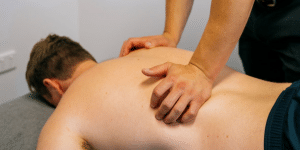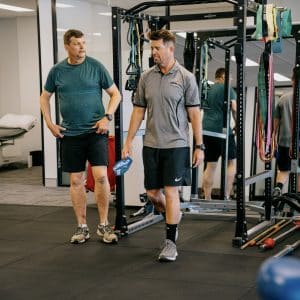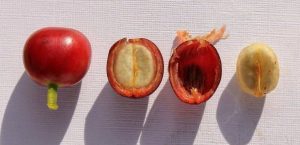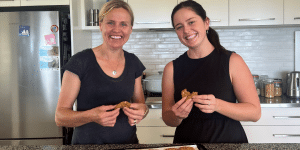Osgood-Schlatter’s Disease

What is Osgood-Schlatter’s Disease?
Osgood-Schlatter’s Disease is a common cause of knee pain in adolescents. Rather than a disease, it is technically a traction apophysitis. This occurs when there is inflammation where the tendon from the kneecap (patella) attaches onto the shin bone (tibia). This inflammation can result in pain at the front of the knee, just below the kneecap. Osgood-Schlatter’s Disease commonly affects males between the ages of 11-15 years, and females between the ages of 8-13 years.
What causes Osgood-Schlatter’s Disease?
When children are growing their bones grow and lengthen at a faster rate than what muscles and other soft tissues do. This difference in growth rates can result in increased tensile forces at the site where the tendon attaches onto the shin bone. Increased force on bone that is not skeletally mature can result in the pain associated with Osgood-Schlatter’s Disease. Children who undergo a growth spurt, or who are more physically active are at higher risk.
What are the Symptoms?
Osgood-Schlatter’s Disease is a self-limiting condition. This means that the symptoms associated with it aren’t going to result in any damage. In majority of cases individuals will not have long-term or ongoing symptoms. Common symptoms associated with Osgood-Schlatter’s Disease include:
-Local pain and swelling over where the tendon inserts onto the shin (tibial tuberosity)
-Activity related pain including running, jumping, and sport
-A bony lump at the tibial tuberosity in some cases
What is the Treatment?
Conservative treatment, including physiotherapy is effective in majority of cases. Physiotherapy treatment will be based upon individual assessment findings. Treatment can include education, load management, activity modification, soft tissue therapy for pain relief, and taping. Your physiotherapist will also devise a personalized home exercise program based on your assessment findings. These exercises will help strengthen weaker muscles and stretch tighter muscles.
For more on other causes of knee pain in kids checkout our blog






